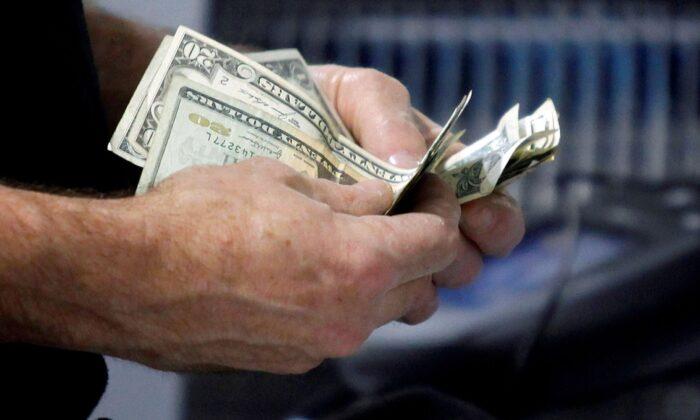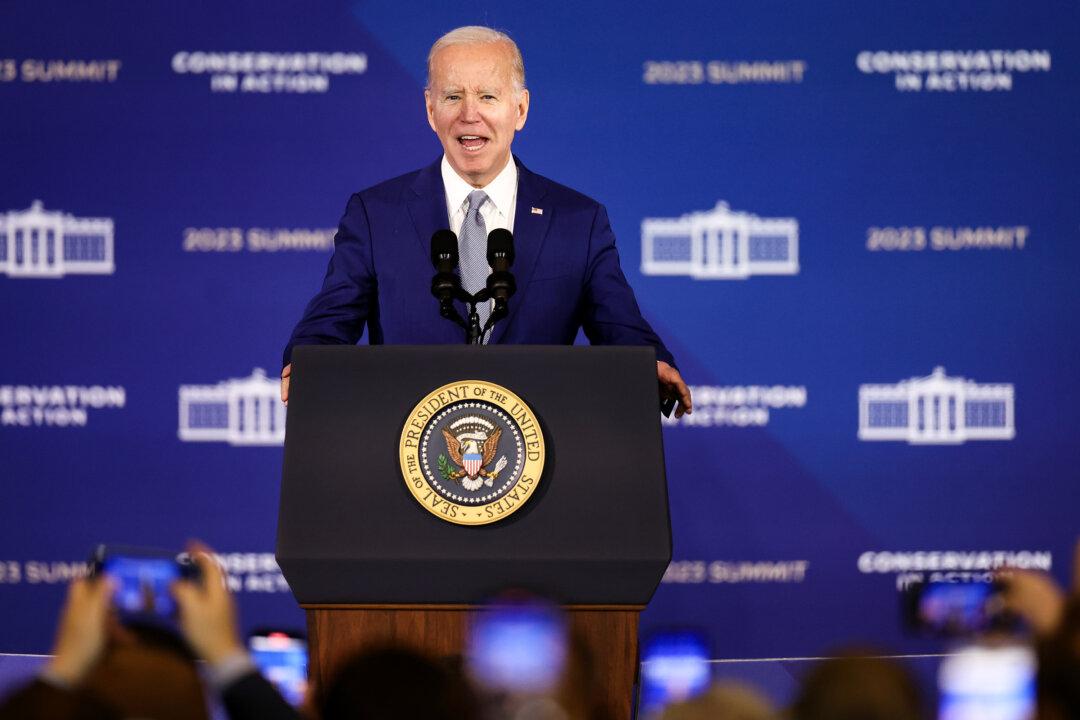Americans’ concerns regarding credit conditions and their own financial situations deteriorated in May, while anxieties over inflation in the coming months dropped to the lowest point since May 2021, new data published on June 12 show.
According to the Federal Reserve Bank of New York’s May survey of consumer expectations, median inflation expectations among Americans declined by 0.3 percentage points, to 4.1 percent last month, the lowest reading in two years.
“That is consistent with the theme that inflation is coming down—probably more slowly than many were hoping—but nonetheless, that trend remains lower both from an actual data standpoint and also from a consumer expectation standpoint,” Angelo Kourkafas, an investment strategist with Edward Jones, told CNN.
However, the percentage of Americans who expect inflation to rise in the next three to five years rose to 3 percent and 2.7 percent, respectively, according to the data, which is based on a nationally representative survey of approximately 1,300 household heads.
Meanwhile, more Americans are bracing for a credit crunch and worsening financial conditions as total credit card debt has soared to $986 billion this year.
Tighter Credit Conditions Expected
“Similarly, respondents’ views about future credit availability deteriorated slightly. The share of respondents expecting tighter credit conditions a year from now increased, while the share expecting looser credit conditions declined,” they said. “The share of respondents expecting tighter credit conditions a year from now increased, while the share expecting looser credit conditions declined.”According to the survey data, the average perceived probability of missing a minimum debt payment over the next three months increased by 0.7 percentage points, to 11.3 percent in May, coming in just below the 12-month trailing average of 11.4 percent.
The increase was largest among respondents below the age of 40 and those with a household income below $50,000.
Elsewhere, an increased number of Americans believe it will become more difficult to obtain credit one year from now, with 15 percent of respondents stating that they anticipate it will become “much harder” and 38.8 percent believing it will become “somewhat header” compared to just 1 percent who think it will be “much easier.”
A total of 7.2 percent of respondents also believe they will be “much worse off” one year from now compared to just 3.7 percent who believe they will be “much better off.” Another 45.2 percent anticipate being in roughly the same financial situation in 12 months’ time.
‘Inflation Moving in the Right Direction’
The latest data come as inflation fell to a one-year annualized rate of 4.9 percent in April, down from 5 percent a month prior and its peak 40-year-high of 9.1 percent last year.However, the core Personal Consumption Expenditures price index, the Fed’s preferred inflation gauge which excludes the volatile food and energy sectors, was up 4.7 percent for the 12 months ended in April after reaching 4.6 in March.
New inflation data for the month of May are set to be released on Tuesday and are widely expected to show that price increases have slowed down.
“The most encouraging thing is the year-over-year growth rates are going to come down pretty sharply,” Mark Zandi, chief economist at Moody’s Analytics, told CNBC. “The headline number is going to feel good, it’s going to be encouraging, showing inflation is moving in the right direction. More fundamentally, I think inflation is moving in the right direction.”
Regardless of what Tuesday’s data show, it remains unclear whether or not the central bank will pause its interest-rate hikes.
While Goldman Sachs expects the Fed to implement a temporary pause this week, they anticipate one more quarter-point hike will be on the cards in the future.
Other experts, including Loretta Mester, president of the Cleveland Fed, aren’t so sure.
“I don’t really see a compelling reason to pause—meaning wait until you get more evidence to decide what to do,” Mester said in an interview with the Financial Times last month. “I would see more of a compelling case for bringing (rates) up ... and then holding for a while until you get less uncertain about where the economy is going,” she added.





